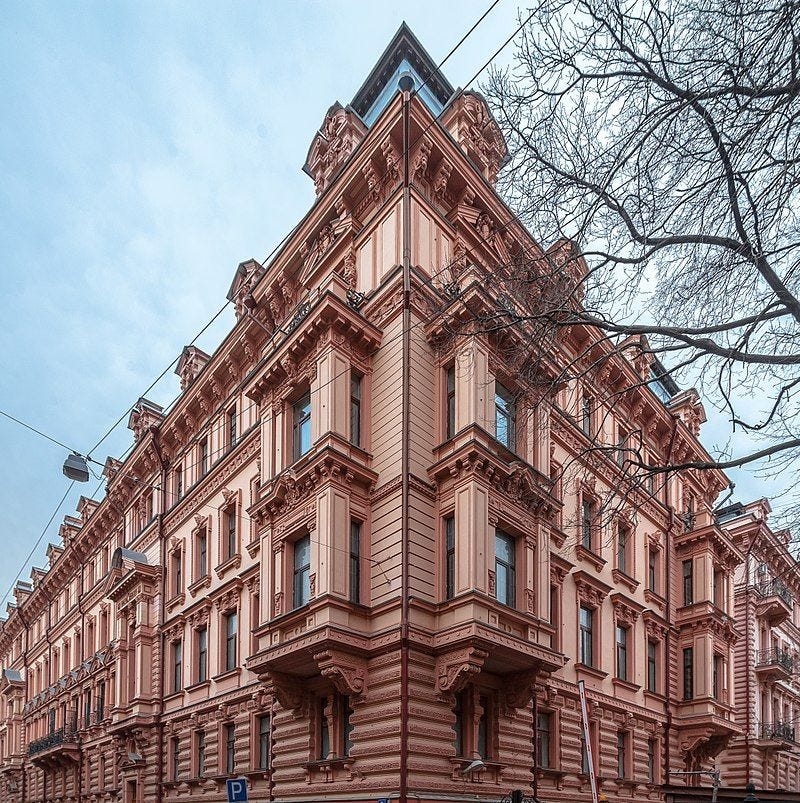Molotov Cocktails & Books
the man ruthlessly behind the tragedy of millions was a passionate bibliophile
Vyacheslav Mikhailovich Skryabin—who used the name Molotov (sledge hammer)—was second in the Soviet leadership, after Joseph Stalin.1 Molotov and Stalin met in 1911 when they were editors of the revolutionary newspaper, Pravda. After the 1917 revolution and the death of Lenin, Molotov rose with Stalin serving as Chairman of the Council of People's Commissars from 1930 to 1941 and as Minister of Foreign Affairs from 1939 to 1949 and from 1953 to 1956.2 He supported Stalin throughout the Great Purge (1936-1938). The 1939 pact between Nazi Germany and the Soviet Union was called the Molotov–Ribbentrop Pact —a non-aggression treaty, that included a secret protocol in which eastern European countries were divided into spheres of interest. Finland fell into the Soviet sphere.
Molotov Cocktails
In the Winter War against Finland in 1939 the Finns used petrol bombs they called Molotovin koktaili —Molotov cocktails— against Soviet tanks. The name was a pejorative reference to Molotov. These were mass-produced by the Finnish Alko alcoholic-beverage corporation and bundled with matches with which to light them.3
Molotov’s Library at 3 Romanov Lane

Molotov survived as a high-level Soviet after the death of Stalin in 1953 until Khrushchev’s denunciation of Stalin at the 20th Congress of the Communist Party in 1956. In 1961 after the 22nd Party Congress Khrushchev carried out his de-Stalinisation campaign, including the removal of Stalin's body from Lenin's Mausoleum. Molotov was removed from all positions and expelled from the Communist Party.
After this Molotov lived at 3 Romanov Lane in Moscow. He died in 1986.
In 2011 Rachel Polonsky published Molotov's Magic Lantern, Uncovering Russia's Secret History based on her exploration of the remnants Molotov’s library which, remarkedly, were still in his former apartment at 3 Romanov Lane.4 She found books by Pushkin, Nekrasov, Dostoevsky, Chekhov, George Bernard Shaw, H.G. Wells, Dante’s Divine Comedy. They were underlined and marked.
Polnonsky observes:
“All the signs suggested that Molotov had possessed these books as a true collector possesses: poring over them, ordering them, living in them….Molotov was a diligent reader…regularly visited Moscow bookshops..spent many hours in the Lenin Library..he talked about poetry..and knew a great deal by heart. ”5
Molotov —Vyacheslav Mikhailovich Skryabin— was central to many events in the 20th century—the Bolshevik revolution, the Great Purge, and World War II. Rachel Polonsky’s book, Molotov's Magic Lantern, Uncovering Russia's Secret History, provides another perspective.
Stalin’s birth name was Ioseb Besarionis dze Jughashvili—but he used the name Stalin (man of steel) after 1912.
Watson, Derek. Molotov : a Biography. Houndmills, Basingstoke, Hampshire ;: Palgrave Macmillan, 2005.
Improvised incendiary devices of this type were used in warfare for the first time in the Spanish Civil War between July 1936 and April 1939. Mims, Christoper (2011). The Power of the Molotov Cocktail . MIT Technology Review.
Polonsky, Rachel (2011). Molotov's Magic Lantern, Uncovering Russia's Secret History. London: Faber and Faber.
Ibid.





Apparently the molotov cocktail can disrupt the communication of a tank but can't really damage it.
Shocking to learn that Molotov was more than a simple bartender.